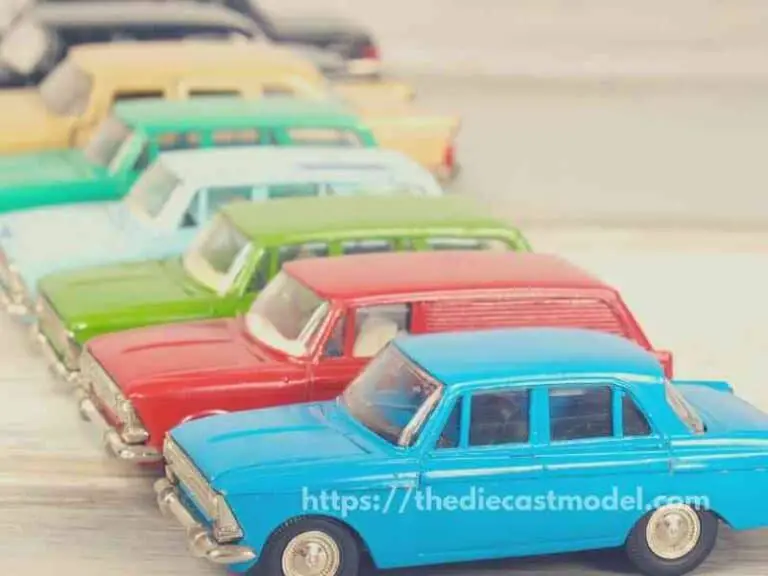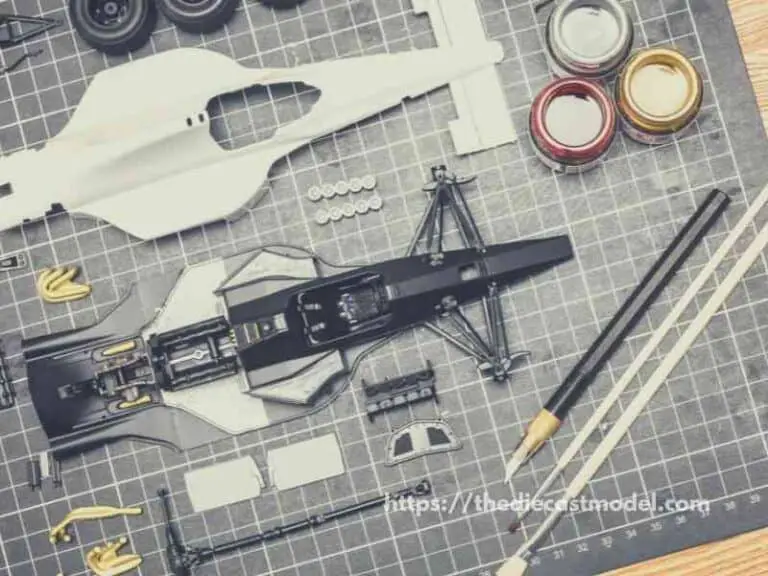11 Things that are Thought to Derail a Train (How Many of Them are True?)
Derailment is a big issue both for the train users and its owners. For one, it can cause a lot of inconveniences for its users, such as delays and injuries. On the train owners, fixing a derailment can be pretty expensive; that costs around $25,000 on average to resolve a derailment. Serious derailment can even cost up to $250,000 just to keep the train on track.
Generally speaking, things such as snow, spikes, cows, deers, elephants, bicycles, and moose can derail a train. However, trains are designed to be durable and can endure some collisions with objects. That’s why smaller and thinner objects such as coins and cardboard boxes don’t usually cause derailments.
This post will discuss the common thing that is thought to cause derailment. Then, we will see if each of the things on the list is true and find any real-life situations that caused derailment issues.

1. Coins
Coins can’t cause a derailment. While many people believe it to be so, coins are too small to affect the train. Usually, coins such as a penny, nickel, or dime that get passed by trains will be flattened but will not cause any damage to the train and its track.
Many people believe that putting coins in tracks can cause a derailment. That’s why some people are worried about riding a train.
However, this isn’t true.
Coins are relatively small to cause derailment on a train.
Trains weigh about 3,000 to 18,000 tons, depending on their load. So a single coin would not cause it to bulge.
This is like using dust to trip a car over.
On the other hand, coins will flatten if a train runs over them. Check the photo below for an example of a flattened coin.

Many people are scared of riding a train because of derailment from coins. The truth is, coins won’t cause a derailment.
However, putting coins on the track is a big problem as train drivers need to be on the lookout for possible collisions.
Did you know? Did you know that putting coins on track is illegal? I made a post talking about why putting coins on tracks is unlawful. You can check the post here if you’re interested: Is it illegal to put coins on railroad tracks?
2. Cardboard
Generally speaking, cardboard can’t derail a train simply because it is too soft and thin to cause a derailment. However, the things inside the box can cause derailments, such as large metal objects. Furthermore, too many cardboard boxes can derail a train.
You might hear some news of robbery where people use cardboard boxes to derail a train and take some goods inside it.
The truth is that is an oversimplification of what happened.
Cardboard boxes can’t derail a train except for two reasons. First, if there are too many cardboard boxes. Second, if other objects inside the box, such as metal pieces or frames, can lift the train.
Regarding the news, cardboard boxes are used to slow down the train and not derail them. Once the train slows down, that’s when people rob the train.
Train derailment using cardboard boxes is close to impossible.
Like coins, cardboard boxes are too small and thin to cause a derailment, and they would only flatten when trains run on them.
There is a slight possibility that too many cardboard boxes can cause a derailment. However, this requires many cardboard boxes in a single location, which is nearly impossible.
Most of the time, the cause of derailment from cardboard boxes is the things inside them, such as scrap metal or frames, and not the cardboard itself.

3. Bicycle
Bicycles can cause train derailment because it is usually made with durable metals, which can slightly lift a train. This can cause not only damage to the train but also to the tracks.
Unlike the first two examples, bicycles are a severe cause of train derailments.
For example, in 2012, the British Transport Police (BTP) appealed for more information when two bicycles were used to block the track, leading to severe damage to the train and its tracks.
This caused a tiny explosion, and some metal sparks flew during the incident.
The good news is no one was injured during the incident. However, this proved that bicycles could cause some severe issues for trains.
Another example is in 2018, when an unused bike was thrown on the train tracks. The good news is that the bicycle was immediately removed from the track before it caused some problems.
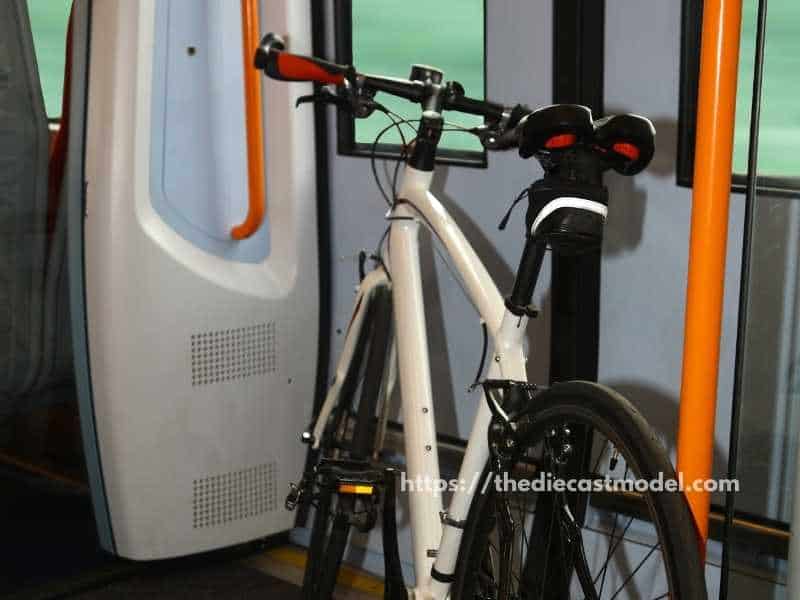
4. Spikes
Spikes can cause train derailment since it is hard enough to lift the train slightly. Furthermore, broken spikes that have caused severe train derailments have been reported in some areas.
Generally speaking, things that are strong and can slightly cause the train to lift can cause a derailment.
In that case, spikes can cause such a thing.
In fact, in 2014, a large train derailment was investigated in Vandergrift, Pennsylvania.
Upon investigating, they found out that the broken spikes caused some issues with the plate ties, which caused the derailment.
The derailment was so massive that 21 train cars were derailed.
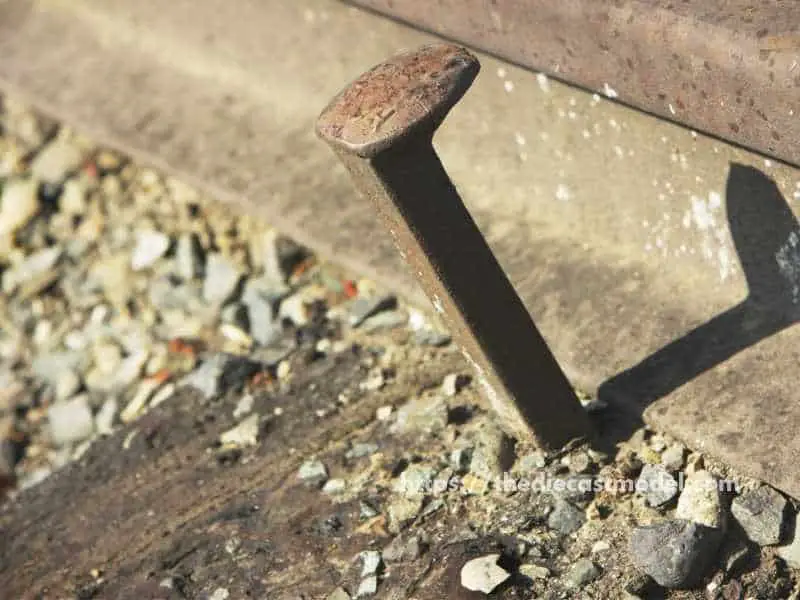
5. Cows
Cows can derail a train, and trains that have been derailed after accidentally hitting cows have been reported in numerous news outlets. Cows are generally big enough to cause some derailments if it is hit by a train.
Cows are a massive problem on train tracks since hitting one could cause train derailments.
The good news is that cows are generally scared, and they stay away from trains.
However, there are still times when trains collide with cows leading to derailments.

An example is an incident in 2015 on a Kent train running on a line between Ashford and Ramsgate.
The train accidentally hit a cow leading to the derailment, and some photos leaked on social media showed the damage made to the train.
The good news is no one was injured in the incident, as 70 passengers were boarding the train, including their staff members.
It is worth noting that the train didn’t hit a single cow. Instead, it hit a herd which leads to the derailment.
One way to prevent cows from going to train tracks is to ensure grass won’t grow on the tracks. This is usually done by placing rocks on the rails.

6. Moose
There are some instances where moose can derail a train. However, these instances are pretty rare, and most of the time, moose can get hit by a train without causing any derailment.
Many reports of Moose getting hit by trains, especially in Alaska.
Generally speaking, this doesn’t cause derailment but causes severe injury and even death to the moose.
For example, it was reported that in 100 moose that was hit by a train, only 1 of which caused the derailment.
The problem is that the moose, hit by the train, usually die due to the impact.
The good news is that the government has been doing things to prevent this from happening, such as installing a cow catcher on the train’s front to reduce the impact if a moose is hit.
Instead of a severe collision, cowcatchers usually throw moose on the side of the train, which dramatically reduces the impact.
This little feature has saved the lives of lots of moose.
The serious case of moose derailing a train happened in 1960 when the accident caused delays on a passenger train with 60 people on board.
The good news is that no one was hurt in the accident.
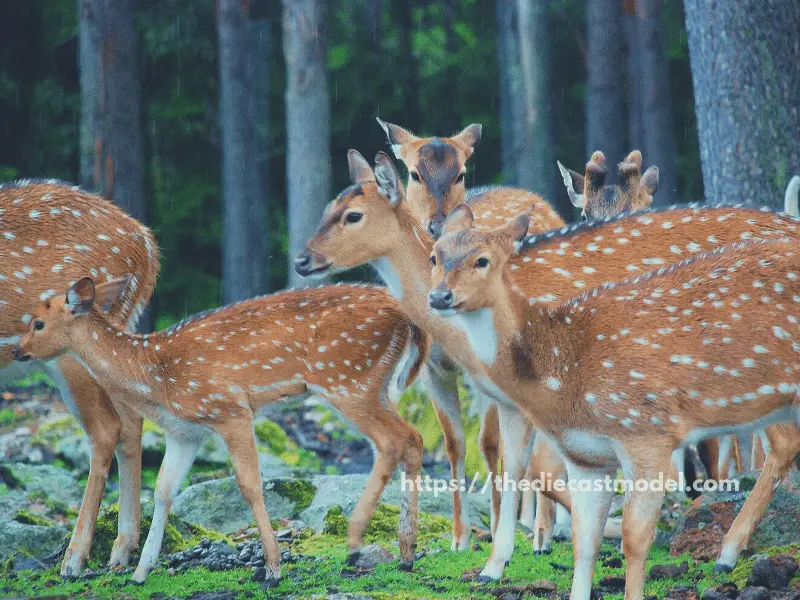
7. Deer
Deers can derail a train, especially if the train is moving at a very fast speed. There are thousands of train-deer collisions reported around the world yearly.
Most of the time, deers wouldn’t cause a derailment. However, if the deer is huge and the train runs extremely fast, derailment can happen.
This is what happened in 2011 when a train running from Berlin to Hamburg was running at 100mph or 160kph.
The train was running so fast, and the deer was so huge that it caused a severe derailment.
No passengers were hurt in the accident, but the train got severe damage and couldn’t continue its journey.
Train hitting deers are common around the globe, and it is a massive problem since deers are attracted to train tracks.
The train tracks are a rich source of salt and iron that deers like to lick.
The problem is that it increases their risk of collision with trains.
To prevent this, trains shouldn’t move very fast and should also have cowcatchers installed to reduce the impact of the collision.
Not only would it reduce the death of deers, but it would also prevent train derailments.
It is worth noting that Japan also introduced a deer bait in 2015 to prevent deers from licking the tracks. They usually install the baits on the side of the rails.
That way, the deers would like the bait instead of the tracks.

8. Elephant
Elephants can derail a train due to their size and strength.
If deers, moose, and cows can, an elephant could also derail a train.
In fact, there is an incredible story in 1894 when an elephant defended his herd from a running train.
This caused the elephant’s death, but the train was also seriously derailed.
Another incident was in 2020 when a train in Odisha, India, hit a 12-year-old elephant.
The impact also derailed the train.
Because of this incident, they started to put railway police to check for stray animals on the track and put some speed limits on the train running on tracks.

9. Trees/Branches
Generally speaking, trees and branches can derail a train if they are large enough to do so. However, most tree branches are so brittle that they would only break when hit by a train.
While derailments caused by trees and branches are rare, they cause some serious damage to the train.
Furthermore, it can delay train services as these trees can block the road.
Storms and strong winds can cause the trees to go down, causing some blockage on the tracks.
For example, it has been reported that 1,500 trees and branches fell on the UK’s main train network in the winter of 2013.
There are also 430 reports of trains hitting trees on branches reported.
So, while they rarely cause a derailment, it is good to clear them before a train crosses the tracks.
This is usually done by routinely cutting the branches that can fall off the track.

10. Snow
Ice and snow can cause derailment because the snow can fill up the track which affects the train’s flange. That’s why most train rides are temporarily canceled when there is heavy snow and why snow is removed religiously in winter.
Right now, we have talked about huge objects that can cause a derailment. But there are other things that can cause problems such as snow.
Have you ever wondered why trains usually cancel their trip when there is heavy snow? This is because snow can also cause derailments.
However, derailments are only a minor problem with snow. The actual cause of the problem is that the tracks and the train wheels are made of steel.
Steel is usually slippery, especially when there is snow. That’s why it is common for trains to slip in winter.
Furthermore, brakes on trains don’t work well in winter since the tracks and wheels are slippery.
Train operators usually set a speed limit when moving trains in winter to prevent this. This makes it easier to put the brakes in case it is needed.
But what about derailment? Derailment usually happens on trains when the snow fills up the track. This might lift the train or affect its flange, which causes derailment.
Furthermore, steel tends to expand and contract with temperature. Thus, the sudden switch between cold and hot can tighten and expand the metals, leading to derailments.
Operators usually remove the snow religiously on rails to prevent snow from affecting the train’s operation.
They sometimes use what they call a wedge plow on the train’s front to plow the snow while moving.
There are also times when they cancel the train’s schedule, especially during heavy snowfall.

11. Rocks
Big rocks can derail a train. However, rocks and stones need to be extremely big and durable to cause any derailments. Rocks that can cause this are rare except if the trains run on mountains. Thus, rocks aren’t a big deal to train operators.
Some people worry that if coins can derail a train, a rock can also do it.
However, as we already know, coins can’t derail a train.
Rocks aren’t a big issue when it comes to train derailment. In fact, if you could notice, most train tracks are filled with rocks.
Rocks are an effective way to make the track durable. It also prevents grass from growing which attracts wildlife in the tracks.
However, big rocks can cause a derailment.
For example, large rocks that fall from the mountains can block the track, which could cause some serious damage to the trains.
However, these rocks are rare, except if the tracks are in a mountainous environment.
What’s next? Speaking of mountainous environments, have you ever wondered why almost all tracks are placed on flat surfaces? Can trains go uphill? If it can? Why don’t we see it more often? If it can’t, why? If you’re interested, please check this post: Can trains go uphill?



